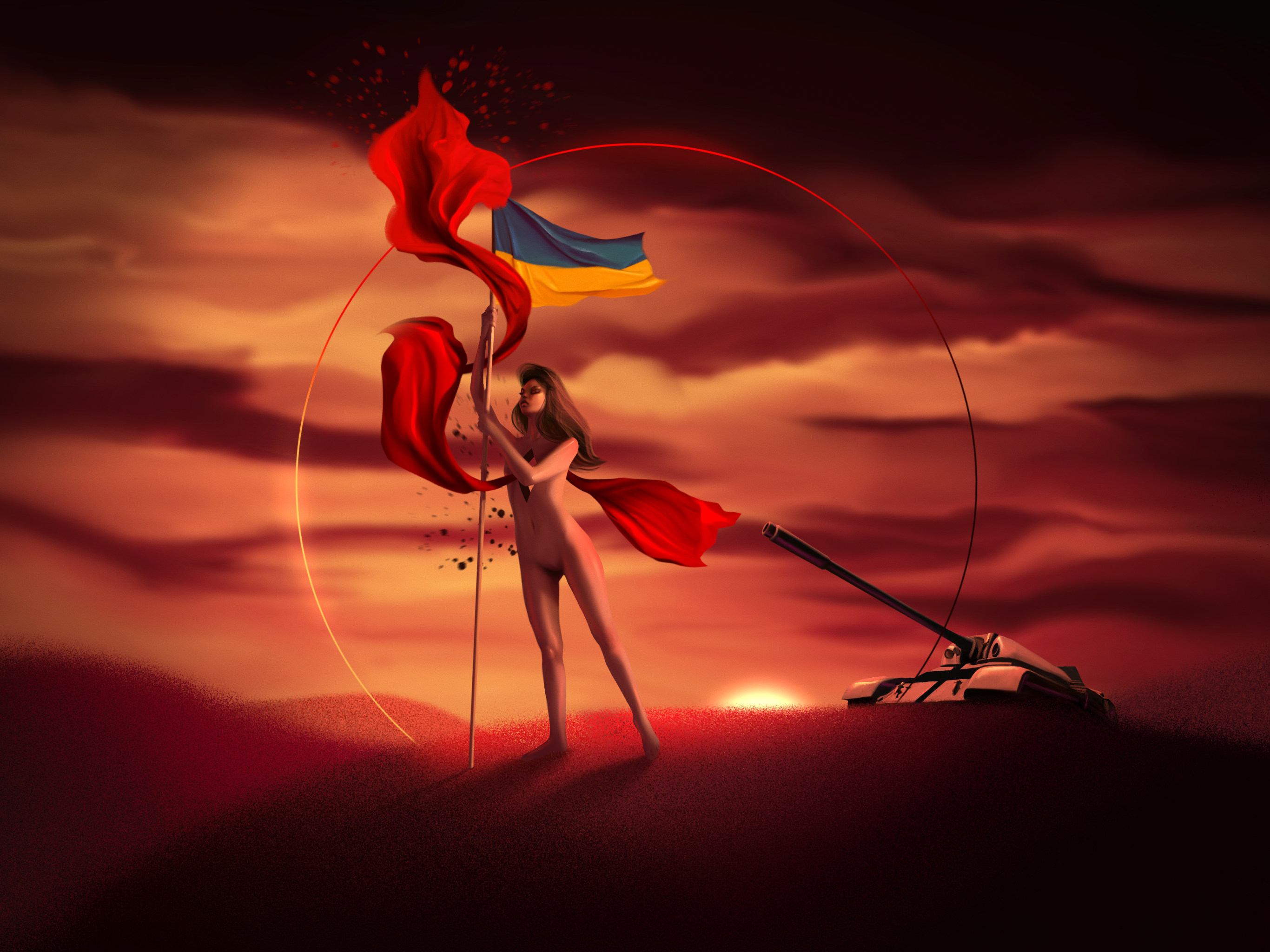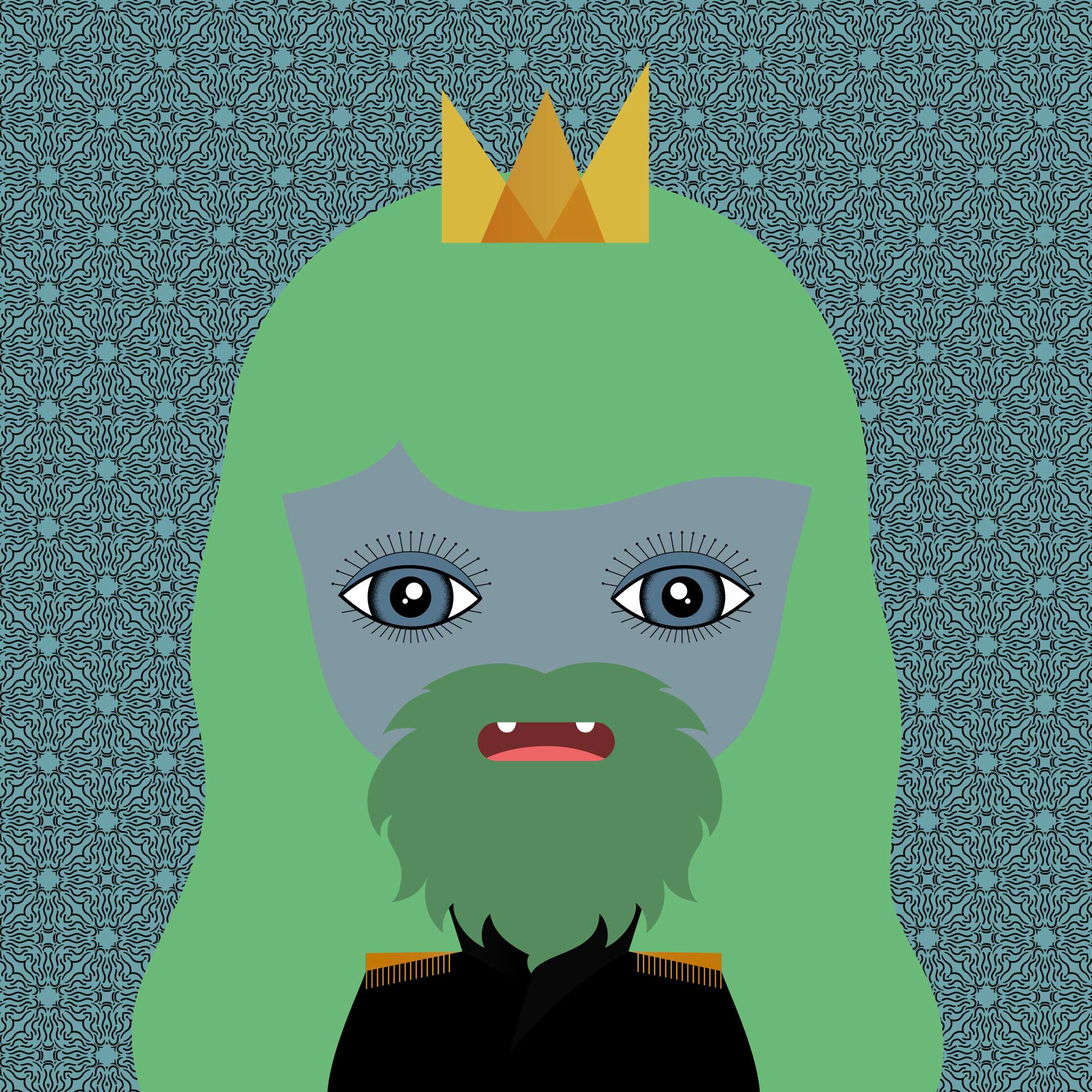SuperRare Labs Senior Curator An interviews ALIENQUEEN about psychedelics, death, and her journey in the NFT space.

The Future of Giving is On-Chain: NFTs for Social Causes
For instance, Ukrainian boxing legend Wladimir Klitschko released an NFT collection with WhIsBe called “Vandalz for Ukraine,” with 100% of the sales going to help fund Red Cross Ukraine, UNICEF Ukraine, and Ukrainian Relief Fund. So far, the project has raised a modest sum of money for the people of Ukraine; currently, the most expensive Vandalz on Open Sea is valued at 4.0 ETH.


Although celebrity endorsements have a strong influence on the NFT marketplace, individual creators are also stirring up NFT sales and generating donations for efforts they believe in supporting. Some of these independent artists create 1/1 artworks, like Camibus who auctioned off “RΞSIST” for 2.0 ETH on SuperRare and donated all of it to @Ukraine_DAO. SuperRare Labs contributed too, and agreed to match the 15% commission received by the SuperRare DAO and give it back to the artist’s preferred charity. Camibus, a visual artist who lives in Romania, sympathizes with the Ukrainians. In the days following the Russian attack on Ukraine she created “RΞSIST” and according to her description, “it’s inspired by the brave resistance of the people fighting for liberty.” In Camibus’s view, “people are inspired by other people’s actions, and you can’t always just expect your fellow human to do right instead of you. The first person you need to convince to be generous is yourself. The more people in the community contribute in a visible way, the more they will empower others to do the same.”
NFT enthusiasts have been known to rally around collections that promote positive social programs, which raise awareness about pressing issues. To that end, BRAVA NFT’s NFT drop aims to mitigate gender-based violence. After minting the collection, BRAVA NFT teamed up with and donated 2.24 ETH to Fondo Semillas, a non-profit organization that mobilizes resources and supports women’s organizations that push for gender equality in Mexico.
According to CryptoDragonis, “BRAVA’s artist Jois Nahual envisioned BRAVAs to be Female Cyberpunk Amazons, who carry some sort of a battle scar (physical or psychological) signifying their fight against gender-based violence, and emerging as not just survivors, but heroes.”
CryptoDragonis, who grew up in Singapore and now lives in Dubai, discovered NFTs while looking to decorate her apartment in late 2020. “My first NFTs were from Hic Et Nunc. I chanced upon the works of Mario Klingemann, otherwise known as Quasimondo. And, I thought ’hang on a second, I know this guy!’ I met Quasimondo back in 2005 in Singapore at a Macromedia Max conference. Hic Et Nunc marketplace was my gateway to NFTs. I realized NFTs were more than art, they were about the people, the community, and about connecting stories.”

By limiting the collection to only 320 NFTs, BRAVA NFT looks to foster a close community. “We kept the BRAVA collection small and tight, so that each BRAVA would land in the hands of holders who truly believed in the cause and who had a personal connection with the project.” CryptoDragonis observed, then added, “The reality is that almost one in three women have been subjected to partner or non-partner physical and/or sexual violence. This needs to change, and the BRAVA project is working surely to help realize this change.” In keeping with this goal, BRAVANFT’s Discord community collaborates together to raise funds to help ensure the personal safety of women all over the world.
To achieve their objectives, the sunnies partnered with National Alliance of Mental Illness, a huge nonprofit that raises awareness about mental illness. “After the launch,” Scales said, “we made a $25,000 donation to NAMI Seattle. One thing we can’t emphasize enough is the importance of mental health in the Web3 space and life in general! All things that can lead to a nice refresher for the mind.”
When the sunnies founder reached out to Scales, the development team–which hails from the Seattle area, where they met in college–started to assemble. “After being in the space minting and buying projects,” Scales told me, “my friend and co-founder, placid approached me with an offer to help run the sunnies. Ever since then I’ve been the Project Manager, working everyday to make the sunnies and the NFT space a better place.”
“The core idea of the sunnies came from the weather in Seattle, which is known for being overcast and rainy. Therefore, they wanted something that challenged or complicated that. A sun was the first thing that came to mind, so our artist reedle made the first sunnie and we all knew this was the one!” Scales exclaimed.
— @scales

CryptoDragonis told me over email that “charity-based NFTs are a unique way to connect people across the globe over one cause. With growing NFT enthusiasm traditional charities have been able to boost their confidence when it comes to securing donations.” It still remains to be seen if donation-oriented NFTs will come to define society’s general opinion of NFT ownership. Yet, forward-thinking NFT communities are picking up where the once progressive-minded social clubs like the VFW (the Veterans of Foreign Wars of the United States) and Kiwanis Clubs (dedicated to improving the lives of children) have left off. These virtual social organizations meet online on Discord forums to host game nights, poker tournaments, and fundraising events.
Philanthropic NFT projects provide collectors with a sense of solidarity, community, and satisfaction that they are supporting a just cause. Needless to say, investing in crypto projects to bring about social change is equivalent to tossing a coin in a wishing well. Non-profit donations are sometimes used as a form of virtue-signaling, or contributors may not understand where their money is really going. Investors are attracted with inflated philanthropic promises but are potentially left disappointed when they fail to make a significant real-life impact where the help is actually needed. Even though direct outreach, like making eye contact with the people you help, is usually the surest way to spark fruitful connections, bringing people together through art and altruism can make a positive difference as well. But the possibilities of socially-impactful NFTs are there, especially as we begin to track the flow of cash on the blockchain–it will just take the people to see them through.
Tech





Out of the Vault and onto the Chain: the Evolving Nature of Provenance
SuperRare editor Oli Scialdone considers the social experience of provenance and its relationship with community in the Web3 space.
Curators' Choice









Curated Conversations: ALIENQUEEN
SuperRare Labs Senior Curator An interviews ALIENQUEEN about psychedelics, death, and her journey in the NFT space.











































